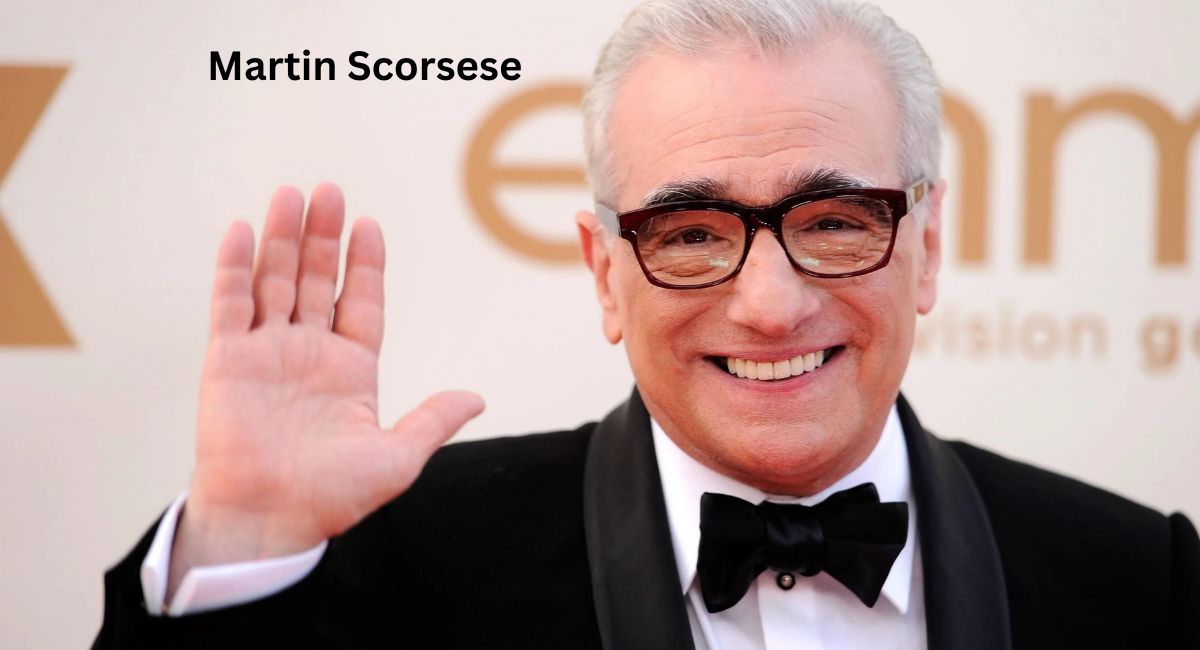Introduction
When you hear the name Martin Scorsese, your mind might immediately race to Taxi Driver, Goodfellas, or The Wolf of Wall Street. But in 2024, he took a path that may seem unlikely for many fans: a docudrama series on saints. Martin Scorsese Presents: The Saints marks a turn toward his deeper spiritual longings, showing that even a director famed for gritty crime epics still has room for quiet contemplation, faith, and historical majesty. In this article, we’ll explore the origin, structure, themes, strengths, and criticisms of the series, and reflect on what this might mean for Scorsese’s future as an artist.
The Genesis: Why Scorsese Chose Saints
One of the most intriguing things about The Saints is how long in the making it was. Back in the early 1980s, after completing Raging Bull, Scorsese reportedly considered walking away from filmmaking altogether and proposed doing a series of television documentaries about saints for Italian television (RAI). At the time, he said he wanted to explore what it means to be a saint, and how ordinary lives stretch into the extraordinary.
That project stalled, and in the interim, Scorsese channeled his spiritual curiosity into feature films—most obviously The Last Temptation of Christ, Kundun, and Silence—all of which tackle issues of faith, doubt, sacrifice, and transcendence. Over the decades, his interest never faded. The idea resurfaced and eventually found a home on Fox Nation, when the streaming platform greenlit the series in 2024.
Scorsese has publicly said that he had “lived with the stories of the saints for most of my life,” thinking about their decisions, their worlds, and how they responded to love, suffering, and divine call. In reviving the original idea for the modern streaming era, he essentially reconnected with a project that had waited patiently for its moment.
Thus, The Saints is not a random detour—it is a culmination of a deep, lifelong dialogue between faith and filmmaking for Scorsese.
Format, Structure, and Storytelling Choices
Episodic Focus on Individual Saints
The series is structured as an eight-episode docudrama, with each episode devoted to one saint. The first season explores figures such as Joan of Arc, John the Baptist, Mary Magdalene, Saint Sebastian, Moses the Black, Thomas Becket, Francis of Assisi, and Maximilian Kolbe. This approach allows each saint’s story to breathe: their historical context, inner struggles, miracles or legends, and legacy all get space to unfold.
In dramatized segments, actors bring key moments to life. These reconstructions are intercut with narration by Scorsese himself and commentary from scholars, theologians, and public intellectuals. The balance is delicate — it’s part biography, part imaginative retelling, part devotional reflection.
Tone: Reverent, But Human
One of the strengths of The Saints is that it doesn’t attempt to turn its subjects into untouchable icons. Scorsese weaves in their human vulnerabilities—frustrations, doubts, mistakes—so that their holiness feels earned, not manufactured. As he himself put it, “the saints were very human. They were flawed, imperfect people, which only heightens their great sacrifices.”
The narration is calm, composed, and respectful, but not distant. Scorsese’s voice functions almost like a guide through a sacred museum—pointing out what to see, why it matters, and inviting you to linger. The scholarly voices fill out context, bringing in historical and theological nuance, while the dramatizations aim to draw you emotionally in.
Pacing and Organization
The pacing is slower than typical streaming spectacle. Each episode is roughly 45–50 minutes long. The series premiered in a split rollout: the first four episodes aired between November and December 2024, and the remaining episodes between April and May 2025. This pacing isn’t about bingeing—it’s about contemplation, giving viewers time to absorb, reflect, and return.
Visually, the show is careful about tone. There’s an emphasis on atmospheric lighting, period detail, and thoughtful framing. The dramatized sections are more cinematic than strictly documentary, though they never feel overblown. Contextual and archival materials are blended in seamlessly.
Key Themes and Motifs
Faith and Doubt
A central tension throughout The Saints is how someone may believe deeply yet wrestle with doubt. Many saints, before their exalted reputation, experienced fear, hesitation, or conflict—be it moral, emotional, or spiritual. The series invites us to see that sanctity isn’t the absence of doubt, but the choice to move forward despite it.
Scorsese seems especially interested in that threshold. By showing saints at their crisis points—Joan of Arc before battle, Mary Magdalene after loss, Thomas Becket in political pressure—the show underscores that faith often lives in liminal spaces.
Sacrifice, Suffering, and Agency
Another theme is the cost of following one’s conscience. Saints like Maximilian Kolbe, who sacrificed his life at Auschwitz to save another prisoner, or Francis of Assisi, who renounced wealth for poverty, embody the idea of radical sacrifice. The series doesn’t shy away from suffering—it treats it with solemnity and respect.
But the show also highlights agency. These figures are not passive victims; they make bold decisions in turbulent contexts. The tension between divine calling and human will is never far from the surface.
Encounter and Transformation
Almost every episode pivots around a turning point—an encounter or crisis that transforms the saint from a “normal person” into someone extraordinary. That moment might be mystical (a vision, a calling), or dramatic (injustice, betrayal, suffering). Scorsese seems fascinated by that threshold where the personal meets the transcendent.
Importantly, The Saints doesn’t present transformation as instantaneous or magical. Rather, it suggests that holiness is a path walked, a journey over time, with setbacks, resistances, and growth.
What Works Well—and What Doesn’t
Strengths
- Scorsese’s Credibility & Passion
Having Martin Scorsese as narrator and executive producer brings gravitas. His genuine interest and respect for the subject shine through. Viewers sense that this is not a superficial “religion show,” but a project born of long engagement. - Balance of Drama and Scholarship
The interplay of dramatization and scholarly commentary helps bridge emotion and intellect. The saints live in story, but the deeper historical and theological layers aren’t neglected. - Honest Portrayal of Humanity
The show resists the temptation to idealize. Saints are shown in shadows as well as in light. Their flaws, doubts, and struggles make them compelling, relatable, and inspiring—not distant. - Scope and Ambition
Covering saints across centuries, cultures, and contexts, the series is broadly ambitious. It asserts that sainthood is not era-bound but timeless, and it invites a diverse audience into the stories.
Weaknesses / Critiques
- Occasional Dramatization Clichés
Some viewers and critics have flagged moments of theatrical or “cheesy” dialogue in the scripted segments, where the dramatic tone feels forced or overly stylized. At times, the show leans into emotional beats more than depth. - Selective Depth
Because each saint gets limited screen time, the series necessarily compresses complex lives. Some episodes feel more texture than depth—there’s only so much you can do within an hour. A few critics argue that interpretive decisions (which events to highlight, which to gloss over) are uneven. - Audience Narrowing
Its spiritual framing might limit appeal among viewers uninterested in faith-oriented narratives. Some might approach expecting traditional documentary neutrality and find the devotional edge unfamiliar. But that may be by design. - Structural Pace
The split-season schedule and contemplative pacing might test the patience of streaming-era audiences used to rapid tempo. For some, waiting months between episodes limits momentum.
Reception, Impact, and Future Prospects
Reception
On balance, The Saints has received mixed-to-positive reception. Some reviews praise the emotional impact and sincerity, while others note the risk of oversimplification. Among faith communities, reactions vary: many appreciate the attention to holy figures, while others worry about interpretive liberties or potential theological missteps.
The series has also gained enough traction that a second season has been commissioned. Season 2 is expected to profile saints like Mary the Virgin, Peter, Paul, Lucia, and others. That renewal suggests the project resonates beyond a niche audience.
Cultural Impact
In a media landscape often skeptical or indifferent to faith, The Saints is significant. It brings religious narratives into the mainstream conversation—narrated by a major filmmaker—and treats them with respect and cinematic seriousness. For viewers curious about history, spirituality, or the human spirit, the series can be a gateway.
For Scorsese himself, it cements a thread already present in his oeuvre: the intersection of holiness, doubt, sin, and redemption. The Saints may influence a new generation to see faith not as archaic relic but as a lens to understand human endurance, suffering, and transcendence.
Looking Ahead: What Next for Scorsese?
Given Scorsese’s longstanding interest in Christian subjects, it wouldn’t be surprising to see him return to the big screen with more explicitly religious work. He has hinted at a film adaptation of A Life of Jesus, and The Saints may act as a companion or precursor.
Moreover, the success of The Saints could pave the way for more faith-based projects by high-profile filmmakers—ones that combine artistry with spiritual depth rather than seeing them as contradictory.
Conclusion: A Bold Step Into the Sacred
Martin Scorsese Presents: The Saints is not a casual side project; it’s a deeply felt, decades-in-the-making labor of faith, storytelling, and reflection. While it’s not perfect—and its dramatic flourishes and narrative compressions may draw valid critique—it is courageous. It offers viewers a path to meet remarkable lives, contemplate sacrifice, and perhaps see that holiness, in many ways, is more human than we assume.
In the end, the series asks: what does it mean to follow a calling that looks impossible? How does someone become “great” through suffering, obedience, love—and failure? For those willing to let the series linger in their minds, The Saints offers more than historical portraits. It offers an invitation.
FAQs
Who are the saints in the Martin Scorsese movie?
The series features saints like Joan of Arc, Mary Magdalene, Francis of Assisi, Thomas Becket, and Maximilian Kolbe.
Where can I watch the Saints series by Martin Scorsese?
You can stream Martin Scorsese Presents: The Saints exclusively on Fox Nation.
How many episodes of The Saints did Martin Scorsese have?
The first season includes eight episodes, each focusing on a different saint.
Is Martin Scorsese a practicing Catholic?
Yes, Scorsese was raised Catholic and continues to explore his faith deeply through his films and projects.
Is Leonardo DiCaprio a Roman Catholic?
Leonardo DiCaprio was raised in a Catholic environment, though he doesn’t publicly discuss his current religious beliefs.
You May Also Read

wellcome to glamnetworth i am rimsha razzaq and AI-Powered SEO , and containt writer with four years of experince i help website rank higher, grow traffic, and look amazing . my goal is to make SEO and web design simple and effective for everyone . Lets achieve more together|
